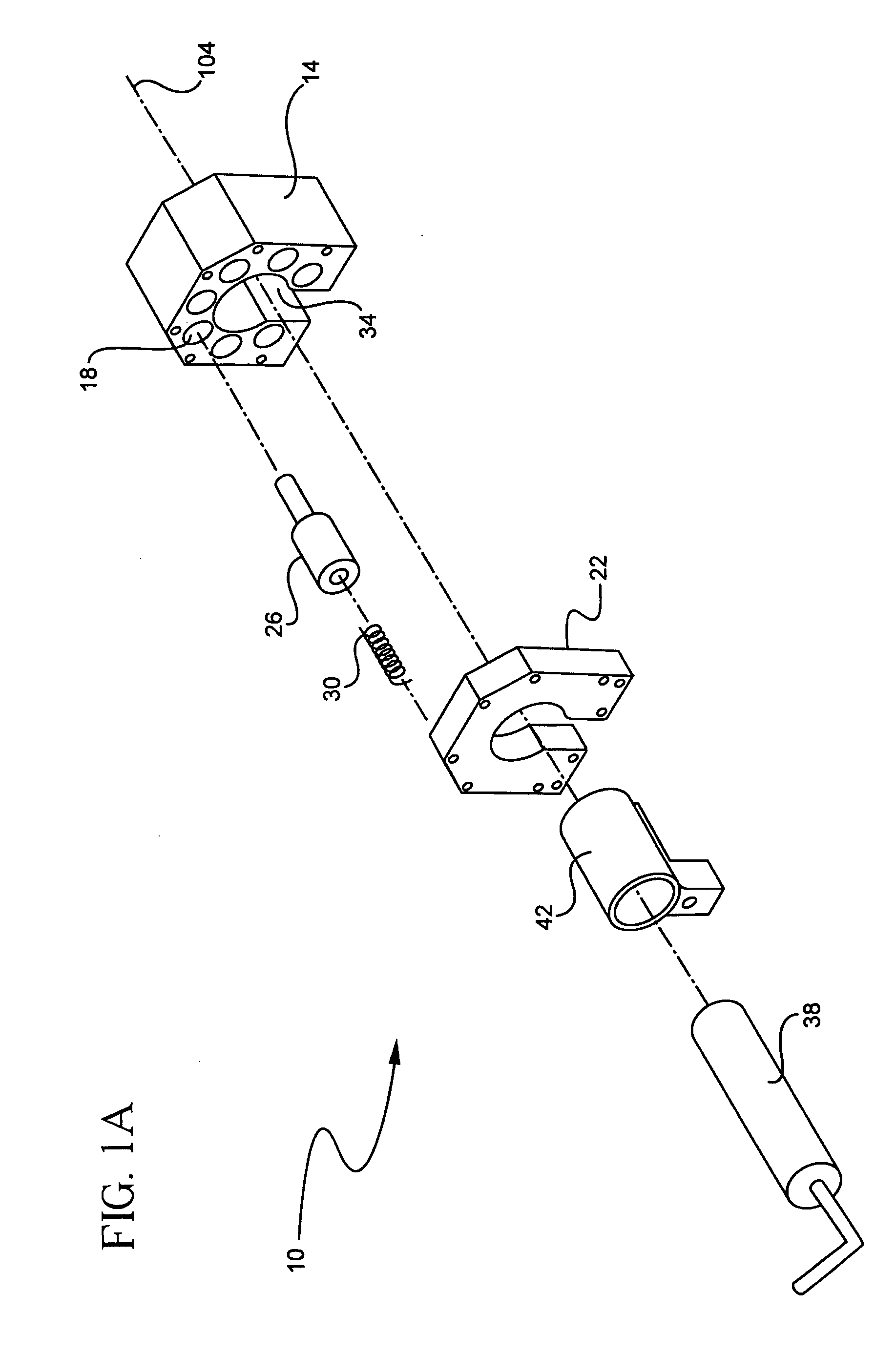Method and apparatus for sealing a glass package
a glass package and sealing technology, applied in the direction of transportation and packaging, manufacturing tools, discharge tube luminescnet screens, etc., can solve the problems of insufficient weight of the substrate in and of itself to facilitate a good seal, and the great effort is made to provide a hermetic package, etc., to achieve the effect of improving the seal quality of the glass packag
- Summary
- Abstract
- Description
- Claims
- Application Information
AI Technical Summary
Benefits of technology
Problems solved by technology
Method used
Image
Examples
experiment 1
[0065]To illustrate the sealing process, an experiment was conducted using a substrate assembly 46 comprising first and second glass substrates. Each of the first and second substrates was approximately 0.7 mm in thickness. The first substrate did not include OLED devices. The second substrate included nine frit walls formed in the shape of rectangular walls or frames that had been deposited onto the second substrate and pre-sintered. The width of the frit wall was approximately 2 mm at the surface of the second substrate. The second substrate was placed overtop the first substrate with the pre-sintered frit disposed between the two substrates. Apparatus 10 was thereafter used to seal each of the nine frit walls with a predetermined force per ball bearing. The laser power was 23 watts at a nominal wavelength of about 900 nm. The laser (i.e. apparatus 10) was traversed over each frit wall. The experiment was repeated for 9 substrate assemblies: The results are shown in Table 1 for 6 ...
PUM
| Property | Measurement | Unit |
|---|---|---|
| Mass | aaaaa | aaaaa |
| Force | aaaaa | aaaaa |
Abstract
Description
Claims
Application Information
 Login to View More
Login to View More - R&D
- Intellectual Property
- Life Sciences
- Materials
- Tech Scout
- Unparalleled Data Quality
- Higher Quality Content
- 60% Fewer Hallucinations
Browse by: Latest US Patents, China's latest patents, Technical Efficacy Thesaurus, Application Domain, Technology Topic, Popular Technical Reports.
© 2025 PatSnap. All rights reserved.Legal|Privacy policy|Modern Slavery Act Transparency Statement|Sitemap|About US| Contact US: help@patsnap.com



